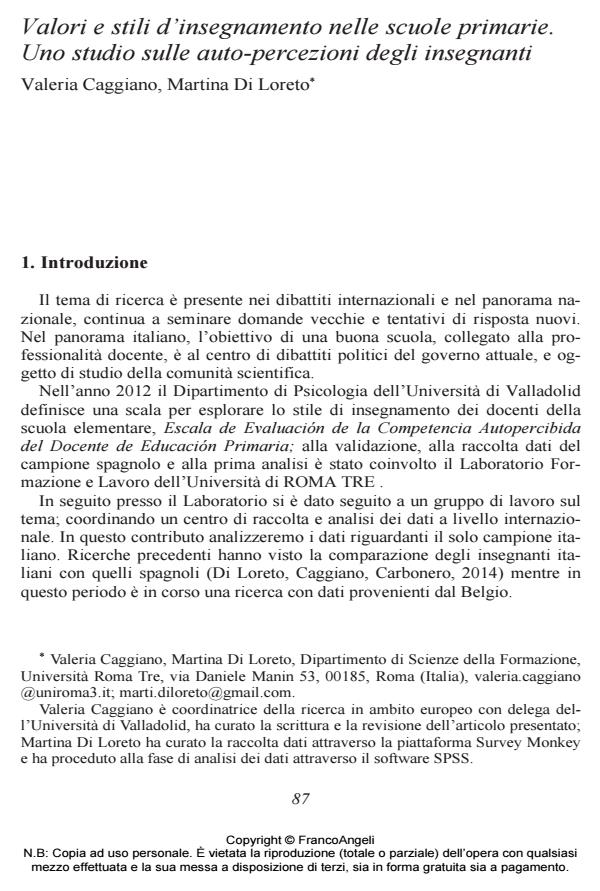Valori e stili d’insegnamento nelle scuole primarie. Uno studio sulle auto-percezioni degli insegnanti
Titolo Rivista CADMO
Autori/Curatori Valeria Caggiano, Martina Di Loreto
Anno di pubblicazione 2015 Fascicolo 2015/1
Lingua Italiano Numero pagine 19 P. 87-105 Dimensione file 83 KB
DOI 10.3280/CAD2015-001008
Il DOI è il codice a barre della proprietà intellettuale: per saperne di più
clicca qui
Qui sotto puoi vedere in anteprima la prima pagina di questo articolo.
Se questo articolo ti interessa, lo puoi acquistare (e scaricare in formato pdf) seguendo le facili indicazioni per acquistare il download credit. Acquista Download Credits per scaricare questo Articolo in formato PDF

FrancoAngeli è membro della Publishers International Linking Association, Inc (PILA)associazione indipendente e non profit per facilitare (attraverso i servizi tecnologici implementati da CrossRef.org) l’accesso degli studiosi ai contenuti digitali nelle pubblicazioni professionali e scientifiche
This contribution is aimed to be a conceptual proposal within the discussion on the teachers’ assessment and also intends to make a contribution in the explanation of the variables affecting and characterizing the primary school teachers’ teaching styles. The study fits within the international debate on this topic and more in specific on the tools used for the assessment, and returns the interest on Values as psychological dimension characterizing the teaching styles and the teachers’ self-assessed skills. The use of the spanish scale "Escala de Evaluación de la Competencia Autopercibida del Docente de Educación Primaria" (ECAD-EP), together with the Schwartz PVQ scale (Portrait Values Questionnaire) involved a sample of 203 primary school teachers. According to the results, the values whom primarily affect the development of these skills and professional behaviors are: tradition, universalism, benevolence and selfdirection. The first two affect more significantly and on a higher number skills, while the rest have more specific and targeted influences. Further studies will show in depth the socio-demographic variables impact on the teaching styles, contributing to the international literature about these issues.
Parole chiave:Teaching styles, teachers’ evaluation, teachers’ self-perceived teaching competences, instructional variables, values.
- Liderazgo educativo en centros de secundaria. Relación con la percepción y la satisfacción laboral del profesorado Raquel de la Fuente-Anuncibay, Jerónimo González-Bernal, Raúl de Diego-Vallejo, Valeria Caggiano, in CADMO 2/2018 pp.51
DOI: 10.3280/CAD2017-002006 - Burnout and Self-Perceived Instructional Competence: An Exploratory Study of a Group of Italian Female Elementary School Teachers Monica Pellerone, Venerando Rapisarda, Maria Chiara Antonietta Trischitta, Ermanno Vitale, Tiziana Ramaci, in International Journal of Environmental Research and Public Health /2020 pp.1356
DOI: 10.3390/ijerph17041356
Valeria Caggiano, Martina Di Loreto, Valori e stili d’insegnamento nelle scuole primarie. Uno studio sulle auto-percezioni degli insegnanti in "CADMO" 1/2015, pp 87-105, DOI: 10.3280/CAD2015-001008